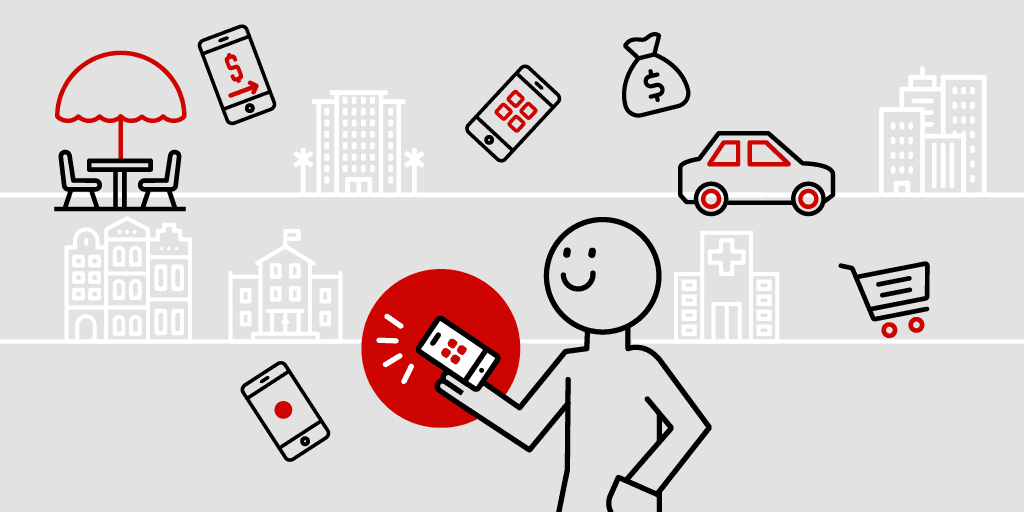On our blog, we have repeatedly pointed out how much smartphones have influenced our daily lives. It was only in the last quarter of 2017 that we observed a historic first: a drop in smartphone sales, which only goes to show that emerging markets are slowly becoming saturated in this regard. However, we rarely consider the extent to which smartphone penetration has impacted city life and what benefits and dangers arise from it.
The phone as a guide
A phone in the city is primarily about communication. And not just verbal communication, but also public transport. With a smartphone, we can check schedules, buy tickets, and apps like Jakdojade will find us an entire travel route. We can also pay for parking using a phone app. This function is available through MobiParking. You'll also need your phone to use city bikes – you get access to them via a PIN code sent to your number. Additionally, if you want to receive information about your bike usage time or use maps, you can download the Nextbike app, which will enable this. Uber and City Car Rentals, like Vozilla, have also become a hit for getting around larger cities.
Essentially, navigating a city without a phone, especially one you don't know, forces you to ask passersby for directions, to squint at timetable signs, or (gasp!) to buy an analog city map. You might say, "You can." Some might even venture, "People used to do this and managed." Okay, people used to draw water from wells and read by kerosene lamps. 🙂 If there are conveniences that speed up our daily tasks, we are always fully in favor.
Smartphone penetration has also influenced a range of other behaviors – we order food directly through apps, check upcoming events happening in our city, and even buy tickets for them (Going App leads the way here).
The city responds
All of this has also had an impact on shaping urban spaces. USB ports have started appearing on trams to charge our smartphones, and special benches have been installed in shopping malls or universities where we can do this. City Wi-Fi networks have been created, which is now a standard in public places, such as cafes or restaurants. In fact, companies have even started using this aspect to attract attention by not providing network access to customers. They then display provocative signs saying
No, we don't have Wi-Fi, talk to each other.
Each of these conveniences has influenced consumer behavior – city dwellers are much more likely to make mobile payments and have their own expectations for newly developed apps that can make their city life easier. In a survey conducted by the City Hall, residents of the capital indicated that they are most interested in apps that allow them to book appointments at government offices or other institutions without having to take a number and wait in line.
A lesson in smartphone savoir-vivre
Do we see any downsides to widespread smartphone adoption? We must admit with regret that despite the fact that a significant portion of us own a smartphone, not everyone can boast of knowing smartphone etiquette. We still frequently witness loud phone conversations in cafes or trains, and often become the "master of the background" when the person in front of us decides to take a spontaneous selfie. Photos are taken everywhere and of everything. During a restaurant visit, there are people who photograph absolutely everything they eat.
In summary, the popularization of smartphones has brought us many benefits in our daily lives. They save us time, avoid queues, and save us from searching for change in our wallets. They help us stay informed about what's happening in the city. However, there are still rude situations associated with them (or rather, with their users!) that we witness (we hope, only witness, Vikings!). We trust that since the appropriate infrastructure for smartphones has already been developed, we will also eliminate impolite behaviors related to the use of our phones.





